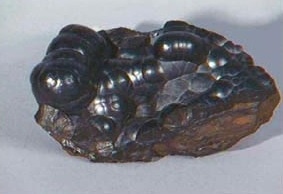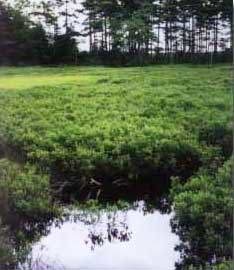Introduction
Differentiating an Ore and a Mineral
Hematite
Magnetite
Goethite and Limonite
Other Iron Bearing Minerals
Sources
Introduction
It is rare to find minable amounts of native metals in their pure form in the Earth’s crust, and iron is no exception. Therefore, minerals that contain iron are extracted and processed in order to extract the valuable metal. Iron occurs in many different forms in the crust, though only a select few of these are economically viable. This article outlines the different chemical and physical properties of economically viable iron minerals and provides examples of where in the world these occur. Almost all the iron ore that is mined globally will contain the minerals outlined in this article.
Differentiating an Ore and a Mineral
It is important at this stage to distinguish between an iron ore and an iron mineral. An ore is the quantity of a mineral resource that can be extracted and is economically viable and legal. An ore mineral however is the chemical compound that contains the desired metal. For example, taconite is an iron ore that is mined extensively in USA, which contains the minerals hematite and magnetite, which in turn contain the iron. The terminology can become blurred as some ores that are mined are almost homogenous-therefore, in a situation in which an extracted ore is predominantly hematite, the term hematite will refer to both the iron ore and the iron bearing mineral.
Hematite
Hematite is possibly the most economically important iron mineral. It is an iron oxide, with the chemical formula of Fe2O3. It is variable in colour, from black to deep red and is often the mineral that gives red-brown sandstone its colour. Pure hematite usually contains around 69.9% Fe. Hematite is a ferric mineral, meaning that it contains Fe3+, which is formed due to oxidation at the Earth’s surface.
Large deposits of haematite are commonly found in banded iron formations, and it is seen as the light bands within these (along with magnetite), whereas the darker bands are usually composed of silica.

Hematite, displaying its famous ‘kidney ore’ morphology and colour from black to rust red. Image Source: http://esp.cr.usgs.gov/info/lacs/magnetic.htm
60% of iron used in manufacturing worldwide is derived from hematite, with the largest producers being Australia and Brazil. Hematite is the most popular iron mineral as it is relatively easy to process using a simple crushing and screening process and is also relatively low in impurities. Ores with a high proportion of hematite are often referred to as ‘direct shipping ores’ because of the ease of processing.
Australia has always traditionally had large reserves of hematite, and since the 1960’s it has been the main iron-bearing mineral mined in ore. Around 96% of all iron ore exported from Australia is hematite of high grade. The Hamersley province in Western Australia is the source of the majority of the hematite mined in Australia, around 80%. Good examples of high grade hematite deposits can be found at the Brockman Iron Formation in Hamersley province. In the Hamersley Province the main types of deposits that are mined are banded iron formations (BIFs), which are predominantly hematite with some goethite. The average grade of the ore mined here is 60%.
The main iron ore mined in the USA is Taconite, which is found in banded iron formations and usually has an iron content of around 20-30%. Around 25% of all iron produced in the USA is derived from Michigan, in the form of hematite and magnetite pellets.
Further good examples of hematite can be found in the Minas Gerais region of Brazil and Cumbria, UK. Certain areas of Mexico, Morocco and Italy also display good hematite examples.
Magnetite
Another iron oxide, magnetite is also a significant source of iron, with 40% of the world’s iron derived from it. With a chemical formula of Fe3O4, magnetite is a black mineral and is the predominant iron oxide found within meteorites. In the field, it is often associated with the minerals talc, hematite, chlorite (when found in metamorphic schist) and pyrite. In appearance, it is shiny with a metallic lustre.

Magnetite, displaying its black color and metallic lustre. Image Source: http://www.aps.anl.gov
Magnetite contains a high proportion of iron, with an average content of 72.4%, which is higher even than hematite. Magnetite is also notable for its strong magnetic properties, which are extremely useful during mineral benefaction.
Unfortunately, there are issues with magnetite production. Magnetite commonly contains impurities, meaning it is expensive to process. Magnetite requires the same crushing and screening processing as hematite, but also needs further magnetic separation before it can be shipped as concentrate.
Despite this, magnetite is growing in importance in steel manufacturing as increasing numbers of steels mills are blending hematite with high grade magnetite to increase quality and productivity.
Magnetite occurs in deposits worldwide and is an emerging industry within the Pilbara region of Western Australia. The largest projects currently in this area are the Sino Iron and the Karara projects.
Goethite and Limonite
Though the two iron oxides discussed above are the most important sources of iron for manufacturing, there are other iron oxide minerals from which iron can be extracted, notably Goethite and Limonite. Both are occasionally referred to as ‘bog iron’; deposits of iron formed via oxidation in swampland.

Deposits of Goethite and Limonite can commonly be found in bogs and swampland. Image Source: http://www.epa.gov
Geothite has the chemical formula FeO.(OH) and is on average about 63% Fe. It is relatively common and can be found in various places across the globe. Notable locations include: Morocco, England, Tharsis, Spain, Ontario, Canada, Utah, Michigan and Colorado..
Limonite is not strictly a distinct mineral, but is rather a mixture of hydrated iron oxides; however it has reasonably uniform physical properties and so is usually classed as a mineral in its own right, especially with regards to mining. Limonite is a yellow-brown with a variable Fe concentration up to 60%.
Limonite can be found in various provinces across China and in Arenalejos, Carratraca, Spain. In the Hamersley Province, WA, limonite is mined from Tertiary palaeochannel deposits at a concentration of 57-59% Fe.
Other Iron Bearing Minerals
There are many other iron bearing minerals that are mined in small quantities, but are not of huge economic importance, due to low abundances or issues with the mining process. For example, pyrite (FeS) is extremely common, but is not mined in large quantities because it releases toxic sulphur gases during processing and also retains sulphur impurities after processing.
Other minor economic iron minerals include:
- Maghemite (Fe2O3)
- Lepidocrocite (γ-FeO(OH)
- Ilmenite (FeTiO3)
- Siderite (FeCO3)
- Marcasite (FeS2)
Sources
http://geology.com/minerals/magnetite.shtml
http://www.australianminesatlas.gov.au/aimr/commodity/iron_ore.html
http://www.minerals.net/mineral/hematite.aspx
http://www.minerals.net/mineral/goethite.aspx
http://www.minerals.net/mineral/limonite.aspx
http://www.galleries.com/default.htm
Disclaimer: The views expressed here are those of the author expressed in their private capacity and do not necessarily represent the views of AZoM.com Limited T/A AZoNetwork the owner and operator of this website. This disclaimer forms part of the Terms and conditions of use of this website.